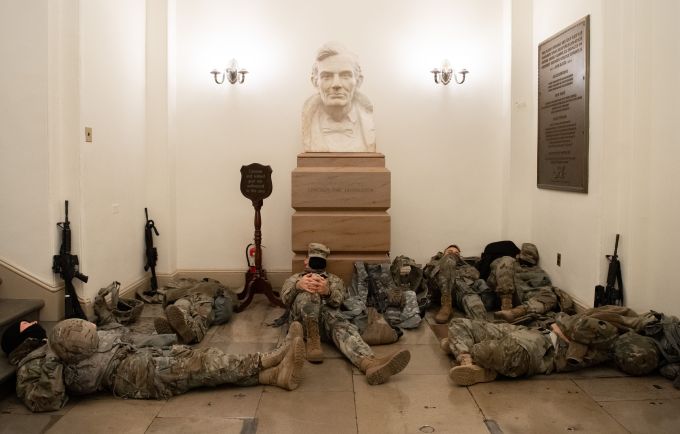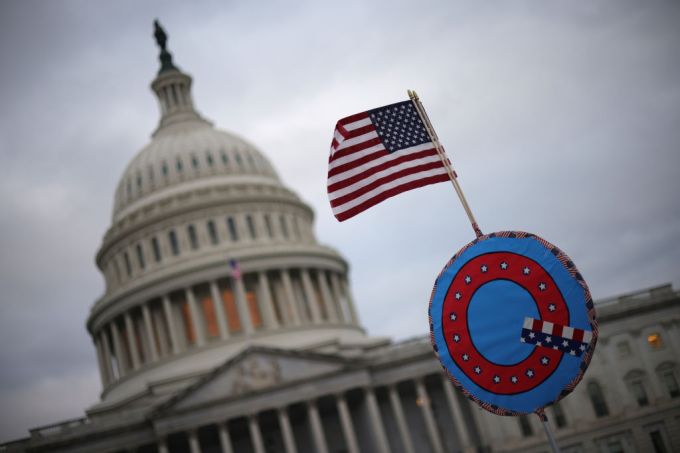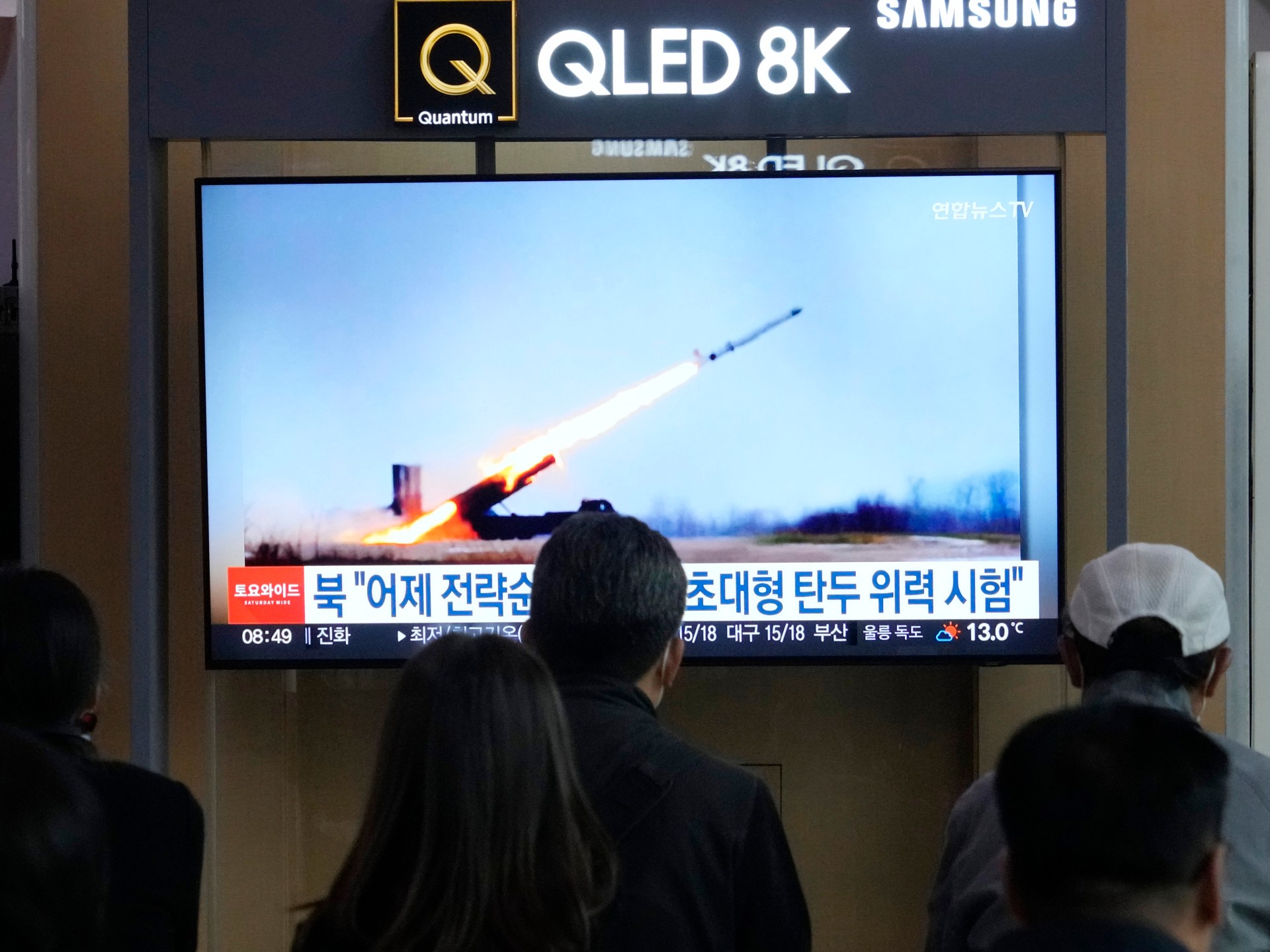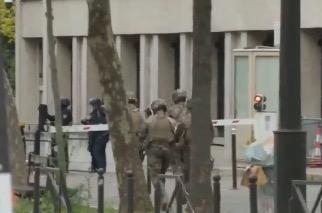Media
Threat of inauguration violence casts a long shadow over social media – TechCrunch
As the U.S. heads into one of the most perilous phases of American democracy since the Civil War, social media companies are scrambling to shore up their patchwork defenses for a moment they appear to have believed would never come.
Most major platforms pulled the emergency break last week, deplatforming the president of the United States and enforcing suddenly robust rules against conspiracies, violent threats and undercurrents of armed insurrection, all of which proliferated on those services for years. But within a week’s time, Amazon, Facebook, Twitter, Apple and Google had all made historic decisions in the name of national stability — and appearances. Snapchat, TikTok, Reddit and even Pinterest took their own actions to prevent a terror plot from being hatched on their platforms.
Now, we’re in the waiting phase. More than a week after a deadly pro-Trump riot invaded the iconic seat of the U.S. legislature, the internet still feels like it’s holding its breath, a now heavily-fortified inauguration ceremony looming ahead.


(Photo by SAUL LOEB/AFP via Getty Images)
What’s still out there
On the largest social network of all, images hyping follow-up events continued to circulate mid this week. One digital Facebook flyer promoted an “armed march on Capitol Hill and all state Capitols,” pushing the dangerous and false conspiracy that the 2020 presidential election was stolen.
Facebook says that it’s working to identify flyers calling for “Stop the Steal” adjacent events using digital fingerprinting, the same process it uses to remove terrorist content from ISIS and Al Qaeda. The company noted that it has seen flyers calling for events on January 17 across the country, January 18 in Virginia and inauguration day in D.C.
At least some of Facebook’s new efforts are working: one popular flyer TechCrunch observed on the platform was removed from some users’ feeds this week. A number of “Stop the Steal” groups we’d observed over the last month also unceremoniously blinked offline early this week following more forceful action from the company. Still, given the writing on the wall, many groups had plenty of time to tweak their names by a few words or point followers elsewhere to organize.
With only days until the presidential transition, acronym-heavy screeds promoting QAnon, an increasingly mainstream collection of outrageous pro-Trump government conspiracy theories, also remain easy to find. On one page with 2,500 followers, a QAnon believer pushed the debunked claim that anti-fascists executed the attack on the Capitol, claiming “January 6 was a trap.”


(Photo by Win McNamee/Getty Images)
On a different QAnon group, an ominous post from an admin issued Congress a warning: “We have found a way to end this travesty! YOUR DAYS ARE NUMBERED!” The elaborate conspiracy’s followers were well represented at the deadly riot at the Capitol, as the many giant “Q” signs and esoteric t-shirt slogans made clear.
In a statement to TechCrunch about the state of extremism on the platform, Facebook says it is coordinating with terrorism experts as well as law enforcement “to prevent direct threats to public safety.” The company also noted that it works with partners to stay aware of violent content taking root on other platforms.
Facebook’s efforts are late and uneven, but they’re also more than the company has done to date. Measures from big social networks coupled with the absence of far-right social networks like Parler and Gab have left Trump’s most ardent supporters once again swearing off Silicon Valley and fanning out for an alternative.
Social media migration
Private messaging apps Telegram and Signal are both seeing an influx of users this week, but they offer something quite different from a Facebook or Twitter-like experience. Some expert social network observers see the recent migration as seasonal rather than permanent.
“The spike in usage of messaging platforms like Telegram and Signal will be temporary,” Yonder CEO Jonathon Morgan told TechCrunch. “Most users will either settle on platforms with a social experience, like Gab, MeWe, or Parler, if it returns, or will migrate back to Twitter and Facebook.”
That company uses AI to track how social groups connect online and what they talk about — violent conspiracies included. Morgan believes that propaganda-spreading “performative internet warriors” make a lot of noise online, but a performance doesn’t work without an audience. Others may quietly pose a more serious threat.
“The different types of engagement we saw during the assault on the Capitol mirror how these groups have fragmented online,” Morgan said. “We saw a large mob who was there to cheer on the extremists but didn’t enter the Capitol, performative internet warriors taking selfies, and paramilitaries carrying flex cuffs (mislabeled as “zip ties” in a lot of social conversation), presumably ready to take hostages.
“Most users (the mob) will be back on Parler if it returns, and in the meantime, they are moving to other apps that mimic the social experience of Twitter and Facebook, like MeWe.”
Still, Morgan says that research shows “deplatforming” extremists and conspiracy-spreaders is an effective strategy and efforts by “tech companies from Airbnb to AWS” will reduce the chances of violence in the coming days.
Cleaning up platforms can help turn the masses away from dangerous views, he explained, but the same efforts might further galvanize people with an existing intense commitment to those beliefs. With the winds shifting, already heterogeneous groups will be scattered too, making their efforts desperate and less predictable.
Deplatforming works, with risks
Jonathan Greenblatt, CEO of the Anti-Defamation League, told TechCrunch that social media companies still need to do much more to prepare for inauguration week. “We saw platforms fall short in their response to the Capitol insurrection,” Greenblatt said.
He cautioned that while many changes are necessary, we should be ready for online extremism to evolve into a more fractured ecosystem. Echo chambers may become smaller and louder, even as the threat of “large scale” coordinated action diminishes.
“The fracturing has also likely pushed people to start communicating with each other via encrypted apps and other private means, strengthening the connections between those in the chat and providing a space where people feel safe openly expressing violent thoughts, organizing future events, and potentially plotting future violence,” Greenblatt said.
By their own standards, social media companies have taken extraordinary measures in the U.S. in the last two weeks. But social networks have a long history of facilitating violence abroad, even as attention turns to political violence in America.
Greenblatt repeated calls for companies to hire more human moderators, a suggestion often made by experts focused on extremism. He believes social media could still take other precautions for inauguration week, like introducing a delay into livestreams or disabling them altogether, bolstering rapid response teams and suspending more accounts temporarily rather than focusing on content takedowns and handing out “strikes.”
“Platforms have provided little-to-nothing in the way of transparency about learnings from last week’s violent attack in the Capitol,” Greenblatt said.
“We know the bare minimum of what they ought to be doing and what they are capable of doing. If these platforms actually provided transparency and insights, we could offer additional—and potentially significantly stronger—suggestions.”
Media
Social Media Tips for Event Profs – BizBash


Social media changes rapidly—and what worked last year might not work in 2024. (Just look at X’s, or Twitter’s, dramatic revenue loss after many major platforms have stopped posting or advertising on the platform.) So what does work on social media right now, particularly for event professionals?
“We don’t just want our audience to understand what we do—we want them to know who we are,” says Zoe Haynes, the sales and marketing coordinator for PlatinumXP who oversees the event planning agency’s digital marketing. “Social media has evolved into a space for cultivating relationships and building trust. We utilize various platforms to tell stories—the story of an event transformation, behind the scenes with our production crew, or maybe even some fun office shenanigans with our CEO.”
Haynes’ focus on maintaining a consistent, authentic brand presence was a common theme among event professionals we spoke to about how they’re using social media right now. It’s all about “fostering an ongoing connection with our followers,” agrees Elias Contessotto, social media manager for event production company 15|40.
But remember: Not every platform is created equal. Contessotto stresses the importance of tailoring your approach with each platform—but also not being afraid to experiment a bit to ensure you’re staying ahead of trends and maximizing audience engagement. “By creatively testing new tactics, we gauge audience response and efficacy, gradually integrating successful approaches into our channels,” he explains. “This iterative process empowers us to refine our content strategy continuously, adapting to evolving trends and audience preferences.”
In short, “It’s all about meeting your audience where they’re at,” says Taylor Elliot, vice president of marketing and brand strategy for Shepard Exposition Services. “Social media is such a great tool to amplify your brand voice. I always say as marketers we need to create a system that works for our brand even when we are sleeping, and social media is one of the tools to help achieve this.”
LINKEDIN & INSTAGRAM
From our conversations, LinkedIn and Instagram quickly emerged as the two top platforms in the event industry. “Instagram is our go-to for showcasing stunning event photos—however, LinkedIn holds equal if not greater importance in our strategy,” explains Haynes. “While Instagram captures attention with its visual allure, LinkedIn allows us to dive deeper into industry conversations and build relationships with our peers.”
Contessotto likes to target a B2B audience with 15|40’s LinkedIn presence, posting content that focuses on industry insights, professional networking, and collaborations with studios. “We often share static posts similar to those on Instagram, tagging relevant studios to expand our reach,” he says, noting that LinkedIn posts are often reshared by team leaders and executives. “LinkedIn [also] serves as a prime platform for spotlighting press coverage, award nominations, and industry highlights.”
On Instagram, meanwhile, Contessotto expands 15|40’s content to cater to both B2B and B2C audiences. “We share visually engaging posts that highlight our expertise, industry leadership, and collaborations, appealing to a wider range of followers,” he says. “Instagram will have ‘POV’ content, which is much more personal and requires less high-quality tools to tell our story. I came to 15|40 from an influencer background, and from experience, I notice that more amateur content does better on that platform, like using an iPhone for reels rather than a DSLR camera.”
Heather Rouffe, director of sales at Atlas Event Rental, also appreciates the more personal touch that can come with Instagram. “Through that platform, we strive to educate the industry, create brand awareness, and most importantly to us, show the personal side to our company, brand, and rentals,” she explains. “With so much of the human side of things lost in a digital age, being personable and showing the people behind the brand is very important to us. We find the clients really appreciate the behind-the-scenes content and becoming familiar with the Atlas crew.”
On the flip side, though, that doesn’t mean LinkedIn can’t get a little personal. Al Mercuro, senior account director at trade show display company Genesis Exhibits, prioritizes LinkedIn due to the connections he’s been able to make with marketing directors and event directors at companies he’d like to do business with.
“I try to not promote my company as much as my brand by sharing information that will help them in their jobs—I find I get many referrals this way,” Mercuro notes. “I believe it is also a living resume; before I meet with someone, they will often check out my LinkedIn page to learn more about me. The more you can build up your profile and the number of connections you have adds to your value and makes it attractive to have them want to work with you.”
Jonathan Kazarian, the founder and CEO of Accelevents, also uses LinkedIn to build up his personal thought leadership—and therefore, build awareness of his event management software company. “Ninety-nine percent of what I share on LinkedIn is professional,” he says. “I’ll share something about my personal life to build connection, but that’s not my focus with LinkedIn.”
FACEBOOK, TWITTER (X), TIKTOK, & MORE
In a sign of changing times, most of the event professionals we spoke with are not investing much in Facebook or Twitter (now known as X)—though many are still updating them.
“We push out all of our Instagram content to our Facebook, to ensure our followers and intended audiences on both platforms are receiving similar content,” says Contessotto. “We also maintain our Twitter, or X, channel to share some of our event photos, as well as retweet content that clients we work with post that are captured at our events.”
Mercuro finds that Facebook is still an effective way to reach older generations—but for younger generations, he’s found some success marketing events on TikTok. “I am a board member of a nonprofit concert venue, and we needed to attract a younger audience,” he remembers. “I suggested we work with a local university and their marketing classes to take on a project like our organization to give them real-life experience. They chose to use TikTok to reach the younger demographics in our area, and it has been extremely successful.”
Contessotto agrees that TikTok is naturally very Gen Z-oriented, so content should be tailored accordingly. “We’ve noticed that we typically receive high engagement when our content is celebrity-focused,” he says. “Our team is constantly working to balance out our TikTok pages to include viral content, as well as videos that highlight our diverse portfolio of work to attract the right kind of audience.”
Haynes says she’s still exploring TikTok’s potential for Platinum XP. “I’ve noticed its popularity as a discovery platform,” she says. “It’s a great tool for driving awareness, but we should also consider whether our target audience is active on TikTok.” One tool that Haynes does invest time in? Pinterest. “It’s a powerful tool for SEO purposes. Its visual nature allows us to drive awareness to our website through captivating photos. By sparking curiosity, we encourage users to click through and explore further.”
Media
North Korea conducts test on new ‘super-large warhead’: State media – Al Jazeera English


Pyongyang says new warhead designed for cruise missiles, adding that a new anti-aircraft rocket was also tested.
North Korea has conducted a test on a “super-large warhead” designed for a strategic cruise missile, state media reports, adding that it also launched a new type of anti-aircraft missile.
“The DPRK Missile Administration has conducted a power test of a super-large warhead designed for ‘Hwasal-1 Ra-3’ strategic cruise missile”, KCNA news agency reported on Saturday, referring to North Korea by an abbreviation for its official name – Democratic People’s Republic of Korea.
North Korea also carried out a test launch on Friday afternoon of a “Pyoljji-1-2”, which state media said was a “new-type anti-aircraft missile”.
KCNA added that “a certain goal was attained” through the test without providing further details.
The weapons tests were part of the “regular activities of the administration and its affiliated defence science institutes”, KCNA reported, referencing the operation of “new-type weapon systems”.
The tests “had nothing to do with the surrounding situation”, KCNA added, but did not give any further information.
In early April, North Korea said it had tested a new medium-to-long-range solid-fuel hypersonic missile, with state media sharing a video of it being launched as leader Kim Jong Un looked on.
Cruise missiles are among a growing collection of North Korean weapons designed to overwhelm regional missile defences. They supplement the North’s vast arsenal of ballistic missiles, including intercontinental variants, which are said to be aimed at the continental United States.
Analysts say anti-aircraft missile technology is an area where North Korea could benefit from its deepening military cooperation with Russia, as the two countries align in the face of their separate, intensifying confrontations with the US.
The US and South Korea have accused the North of providing artillery shells and other equipment to Russia to help extend its warfighting ability in Ukraine.
Since its second nuclear test in 2009, Pyongyang has been under heavy international sanctions, but the development of its nuclear and weapons programmes has continued unabated.
Media
Lawmakers pan Ben Gvir for ‘unforgivable’ tweet on alleged Israeli strike on Iran – The Times of Israel


Italian FM says Israel gave US ‘last minute’ warning about drone attack on Iran
CAPRI, Italy (AP) — The United States told the Group of Seven foreign ministers that it received “last minute” information from Israel about a drone action in Iran early this morning, Italy’s foreign minister says.
Italian Foreign Minister Antonio Tajani, who chaired the meeting of ministers of industrialized countries, says the United States provided the information at session this morning that was changed at the last minute to address the suspected attack.
Tajani says the US informed the G7 ministers that it had been “informed at the last minute” by Israel about the drones. “But there was no sharing of the attack by the US. It was a mere information.”
Early Friday, Iran fired air defenses at a major air base and a nuclear site near the central city of Isfahan after spotting drones, part of an apparent Israeli attack in retaliation for Tehran’s unprecedented drone-and-missile assault on the country last weekend.
In a communique following the three-day meeting, the ministers urged the parties “to prevent further escalation.”
-
Media14 hours ago
DJT Stock Rises. Trump Media CEO Alleges Potential Market Manipulation. – Barron's
-
Media16 hours ago
Trump Media alerts Nasdaq to potential market manipulation from 'naked' short selling of DJT stock – CNBC
-
Investment15 hours ago
Private equity gears up for potential National Football League investments – Financial Times
-



 Sports19 hours ago
Sports19 hours ago2024 Stanley Cup Playoffs 1st-round schedule – NHL.com
-



 Investment24 hours ago
Investment24 hours agoWant to Outperform 88% of Professional Fund Managers? Buy This 1 Investment and Hold It Forever. – The Motley Fool
-



 Health23 hours ago
Health23 hours agoToronto reports 2 more measles cases. Use our tool to check the spread in Canada – Toronto Star
-
Business15 hours ago
Gas prices see 'largest single-day jump since early 2022': En-Pro International – Yahoo Canada Finance
-
Real eState7 hours ago
Botched home sale costs Winnipeg man his right to sell real estate in Manitoba – CBC.ca




